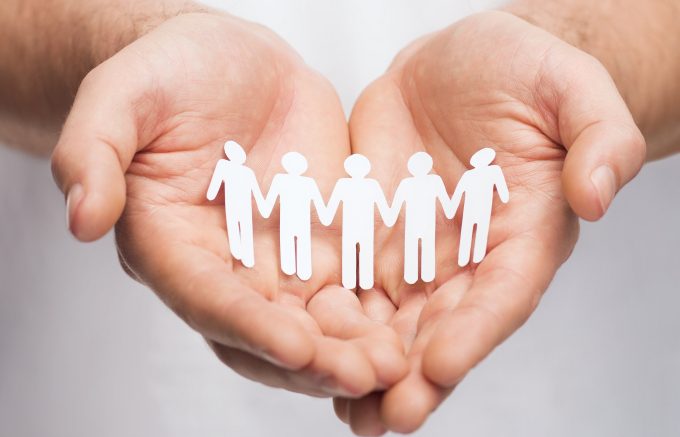The NHS in England’s mental health budget for 2017/2018 was almost £12 billion – roughly 10% of the Department of Health budget- and the mental health crisis in the UK affects individuals of every age and gender.
But how many of incidents of depression, stress and chronic anxiety could be prevented? For anyone involved in care – from carers to agencies, family members to clients – many aspects of the current care model add considerably to the day to day stress levels. Clearly in an industry struggling with chronic levels of under-resourcing, staff experience elevated levels of stress. But there are many other issues that also need to be understood, from the uncertainty carers face prior to each client visit, to overwhelming responsibility and a lack of control over the situation, all issues known to influence mental health.
Helen Dempster, Chief Visionary Officer, Karantis360, discusses the role of IoT and AI in transforming the care industry and safeguarding carer mental health.
Carer Wellbeing
Society’s expectations of everyone in the care industry, from carers to nurses and doctors, are overwhelming – and the impact on mental health is disturbing: 84% of carers feel stressed, 78% anxious and 55% report suffering from depression as a result of their caring role. For carers, it is the continual fear of the unknown that can create significant levels of stress. From visiting a client for the first time, to arriving at the door of a client with dementia and unpredictable mental and physical capabilities, to discovering a deceased client, even the frustration of traffic, parking and finding a new address, every day potentially raises a new set of stressful events.
Furthermore, while carer safety is obviously a concern, due to a combination of funding issues and lack of resource most visits are single handed. Add in the challenge of trying to cram administration and reporting into a 30 minute care visit, and the process becomes inherently unsatisfying – for both carer and client.
Of course, the anxiety associated with caring is far from limited to the front line carers – for care agencies, the issue of ‘dumping’ creates very significant levels of stress. Too many families simply do not understand the remit of the care agency’s service – which is typically not 24 hour – a problem that can be exacerbated by a failure to notice or accept that the family member’s care needs have increased. The result is stress and unhappiness for everyone involved.
Removing Uncertainty
There are simple steps that can radically improve the overall experience for the carer – and, by default, for the client. Using digital technology to reduce admin and increase client contact time is an obvious step, improving the experience for both parties. But that is just the start: the fundamental requirement is a way to better share information between carers and gain far more insight into a client’s wellbeing than can ever be achieved within a short visit.
IoT sensors, from temperature and humidity to movement, can provide insight into a client’s day to day behaviour, building up a picture of usual activity. Combined with an AI algorithm, once a pattern has been confirmed the solution can immediately detect if a client’s behaviour falls outside the norm – whether that is getting up multiple times during the night, potentially denoting a Urinary Tract Infection, or failing to turn on the kettle, even getting up, which could indicate a more urgent health issue.
For carers, having a quick overview of each client’s recent activity on a mobile device before entering the house is incredibly powerful, especially when combined with notes – which can be spoken into the device – from the most recent care visits. For example, has the client had an episode over the past few days? Refused or been unable to get out of bed? If the system is being used to its full potential, not only will the carer have an up to date view of the client’s activity, but any abnormal behaviours will immediately create an alert for the care agency. Essentially, the carer is forewarned of any potential problem with a client – eradicating the uncertainty that is so devastating to mental health.
Transforming Care
In addition to ensuring alerts result in priority visits, one of the other significant benefits of this process is the improved level of care. With carers spending less time filling in forms, the quality of care will improve, a key issue to address given that lonely people are more likely to suffer from depression.
Furthermore, armed with timely and relevant client information, the carer is aware of and can address potential problems. For example, if a client has been up all night, he or she is likely to be grumpy and off-balance. But the sensors ensure the carer knows the client has not slept, enabling the right questions to be asked during the care visit to determine the reason – and potentially picking up a problem before it becomes more critical.
Furthermore, this information can be shared with nominated family members, enabling care agencies to address the ‘dumping’ issue which is stressful and upsetting for care providers and family members alike. Leveraging the IoT sensors and real-time view, shared responsibility can be seamlessly enabled, with a smooth transfer of responsibility overnight when the care agency shuts down, eradicating confusion and ensuring the entire duty of care model is transparent and well understood by every stakeholder.
Conclusion
Mental health is becoming an ever more important aspect of employee wellbeing and as care service providers now face the additional recruitment and retention challenge created by Brexit, it has never been more important to address the escalating levels of stress that are affecting carers’ mental health and without doubt contributing to the high numbers of people leaving the industry.
Carers need support. They need more information, better information and, critically, more chance to care. No more time scribbling notes whilst also making the client a cup of tea; no more worrying about forgetting key questions or overlooking signs of client ill health. From streamlined, voice enabled and clearly prompted reporting to a full and complete picture of a client’s behaviour, with the back up of AI generated alerts in response to a change in client activity, key areas of stress – namely uncertainty and responsibility – are addressed.
By leveraging digital technology and IoT to provide a real-time view of a client’s behaviour and minimising the onerous admin tasks, care agencies can minimise stress and release carers to spend more time doing the job they love: caring.





